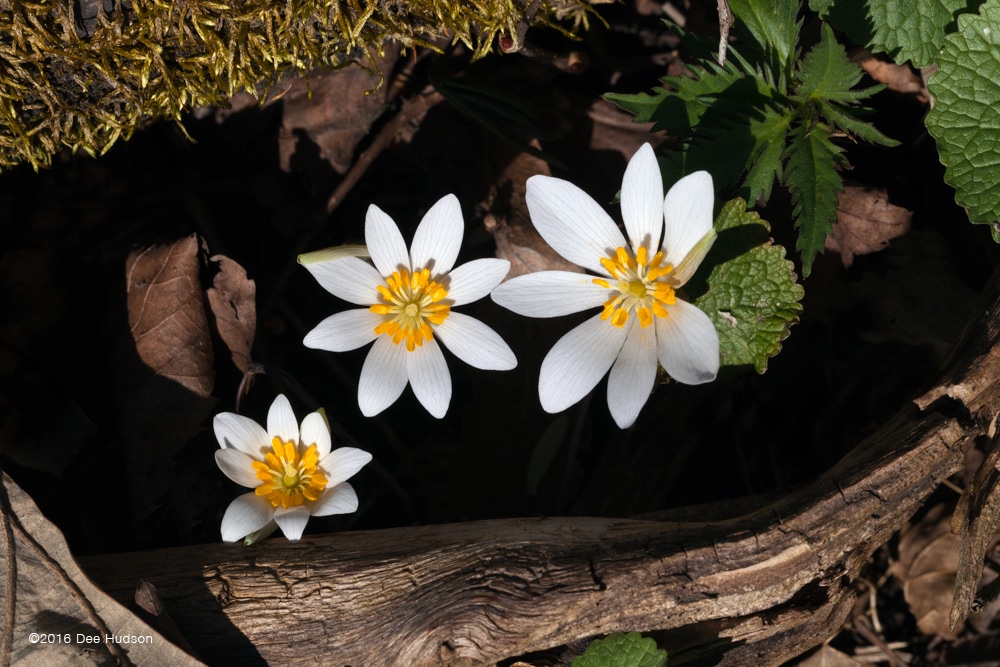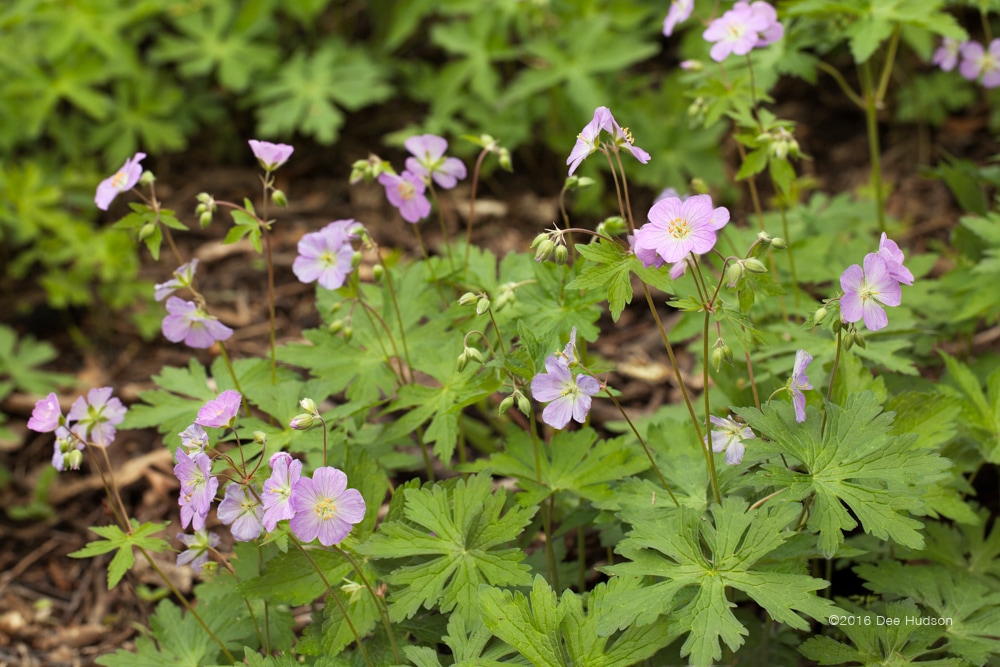|
The first day of spring 2017 has arrived! This day marks the equinox, with the sun shining equally on both the northern and southern hemispheres; the result is nearly equal hours of daylight and night. What does this mean for the prairie? Well, longer daylight means those first spring blooms are almost here! With new blades of grass already a couple inches high in the recently burned fields, April will soon bring the year’s first blooms. Let’s take a look at some of Nachusa’s beautiful spring flowers and discover where to find them. All flowers listed below are found in non–bison units and are accessible to everyone. Before the trees fill their canopies with leaves, several flowers utilize all the sunlight shining to the ground and quickly complete their whole life–cycle; then the entire plant disappears completely, leaving no trace. These short–term blooms are called spring ephemerals. The bloodroot is an ephemeral found in Nachusa's woodlands and savannas. Its showy white flower creates a great contrast against the forest floor. The plant’s name comes from the red juice that flows when any part of the plant is cut or bruised. Look for bloodroot under the trees in Stone Barn Savanna and Big Jump. Another ephemeral is Virginia bluebells, and this plant can be quite stunning growing in mass groups. They bring wonderful color to the shady parts of the woodland. Look for Virginia bluebells in moist areas of Stone Barn Savanna. Has someone been hanging their pantaloons out to dry? Certainly not! These "v-shaped" hanging flowers are found on the aptly named "Dutchman's breeches." Look for the flowers emerging from mounded fern–like foliage. Dutchman's breeches are located in the woodlands of Stone Barn Savanna. The last featured spring ephemeral is the spring beauty. Spring beauty is a very small plant found in Nachusa’s woodlands and savannas; only 3-6” tall. To identify the flower, look for the dark pink veins found on the petals. This lovely flower can be found in Stone Barn Savanna. Look for this unusual–looking flower in shady to partial–shady woodland areas. The flower can vary in color from reddish green (like pictured) to whitish green. Hike along the tracks in Stone Barn Savanna to find the jack-in–the–pulpit. Many geraniums are popular with gardeners as full–sun annuals planted in flower beds or pots. Similar in appearance, the native wild geranium is a hardy perennial flower growing in woodlands. The flowers are very showy and popular among bees and other insects. The flowers can be found in areas of full–sun, part–sun or shade. Look for it in Stone Barn Savanna. The name of this native flower is easy to remember because its blooms look like little arrows aimed at the ground. Climb along the slopes of Thelma Carpenter Prairie to find the Shooting Star. Here is a beauty that prefers sandy soils and little competition from other plants. The bird–shaped foliage gives this flower its name. This violet species is very important at Nachusa, for it is a host to the eggs and caterpillars of the state–endangered regal fritillary butterfly. Look for the violet in sandy soils at Stone Barn Savanna and Big Jump.
Looking for wildflowers is like going on a scavenger hunt. It's a lot of fun and you never know what you will find. Remember to "take only pictures and leave only footprints!" Please feel free to share your successes or adventures in the comment section below. Today’s author is Dee Hudson, a photographer for Nachusa Grasslands. To see more prairie images, visit her website at www.deehudsonphotography.com.
1 Comment
|
Blog CoordinatorDee Hudson
I am a nature photographer, a freelance graphic designer, and steward at Nachusa's Thelma Carpenter Prairie. I have taken photos for Nachusa since 2012. EditorJames Higby
I have been a high school French teacher, registered piano technician, and librarian. In retirement I am a volunteer historian at Lee County Historical and Genealogical Society. Categories
All
Archives
January 2024
|
CONNECT WITH US |
|









 RSS Feed
RSS Feed